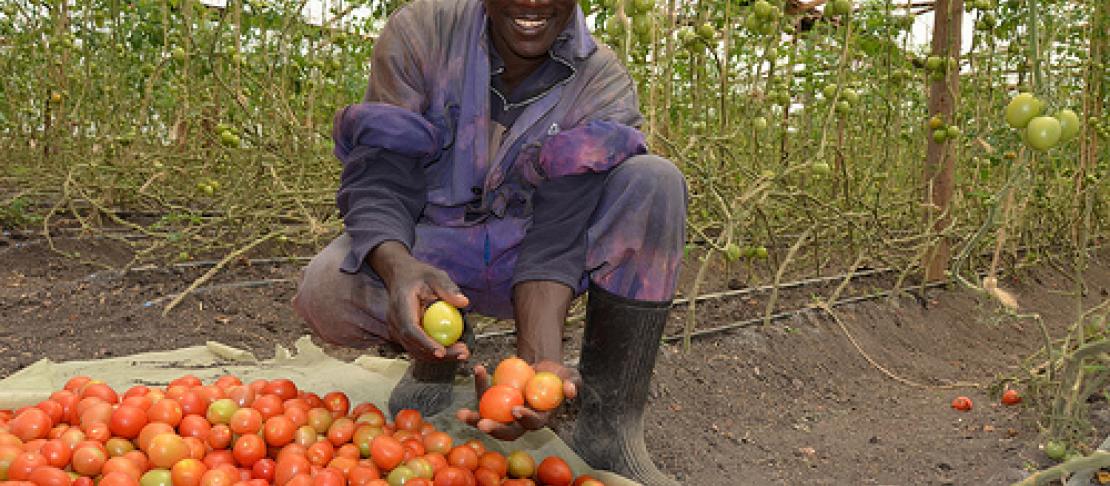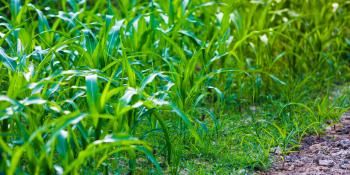The time is now to engage youth in agriculture

“Half of the 7 billion global population comprises young people who are under 30 years,” said Peter Holmgren, Director General of the Center for International Forestry Research (CIFOR). Yet despite the numbers, youth are often left out of discussions on sustainable landscapes and agriculture. Not so at this year's Global Landscapes Forum (GLF).
Co-organized by the CGIAR Research Program on Climate Change, Agriculture and Food Security (CCAFS) and CIFOR, this year's GLF kicked off with eight compelling stories from young people working on the frontlines of agricultural and forestry development.
Youth voices during GLF
“My grandfather lived in a green pasture. I live on totally eroded land. I want to change this situation.”
These are words from Steven Kibet, one of the session's many inspiring speakers. Steven emphasized the importance of involving the youth in the creation of sustainable landscapes; an idea that was reinforced by all the speakers.
“Nothing should be done for the young people without involving them”, said Karen Tuason from the Philippines who is empowering young farmers back home, ensuring they have access to land. Torun’s initiative brings youth together to collectively address and improve food security, purchasing power, education and health in their community.
Just like in the Phillipines, many youth in Africa do not have access to land, which is mostly owned by the older members of the community. This means that they get no say in how scarce resources are used. Farming is left to the elderly and to rural people.
Land tenure issues are just one of many factors that discourage young people from agriculture. Overcoming these issues is vital for the future of Africa.
Learn more about how CCAFS is engaging young farmers in East Africa: Villages can become climate-resilient. This is how!
But it's not all doom and gloom: “the youth are in agriculture. As long as it’s innovative and they can make money, consider them in business,” we were told by Joseph Macharia.
Joseph is luring the youth back to farms by harnessing the power of social media in Kenya. Through the Mkulima Young Facebook page, farmers get advice on farming technologies and how to access new markets. They also engage other young farmers who have made it big and get inspired.
“The youth need role models to inspire them. This is one of the ways to encourage them that it is possible,” continued Joseph.
Learn more from a learning initiative in Kenya: Pioneering farmers inspire others to get climate proofed
Encouraging youth to engage in agriculture and sustainable landscapes also entails selling them an attractive model.
“The youth need not practice agriculture similar to what we had 100 years ago. Agriculture does not have to be labor intensive” said Nadia Manning Thomas, one of the panelists.
The agriculture value chain presents enormous opportunities. Youth can be involved in whatever stage, from the farm level, to value addition or at markets.
“Modern agriculture presents new possibilities for the youth with much higher returns” said Nadia.
Way Forward
In a nutshell, panelists during the youth session agreed that the role played by young people in agriculture can no longer be ignored. All stakeholders must strategize on ways that will encourage them to take up agriculture.
“Let us encourage decision makers to engage the youth”, said Aliness Mumba of the Food, Agriculture and Natural Resources Policy Analysis Network (FANRPAN).
Vivian Atakos is a Communication Specialist for CCAFS East Africa.
The CCAFS team is reporting live from the UNFCCC climate talks in Warsaw, 11-22 November 2013. Click to read all of our coverage. For live updates from the Climate talks in Warsaw, follow us on twitter @cgiarclimate and @bcampbell_CGIAR. Join the conversation using #GLFCOP19.



